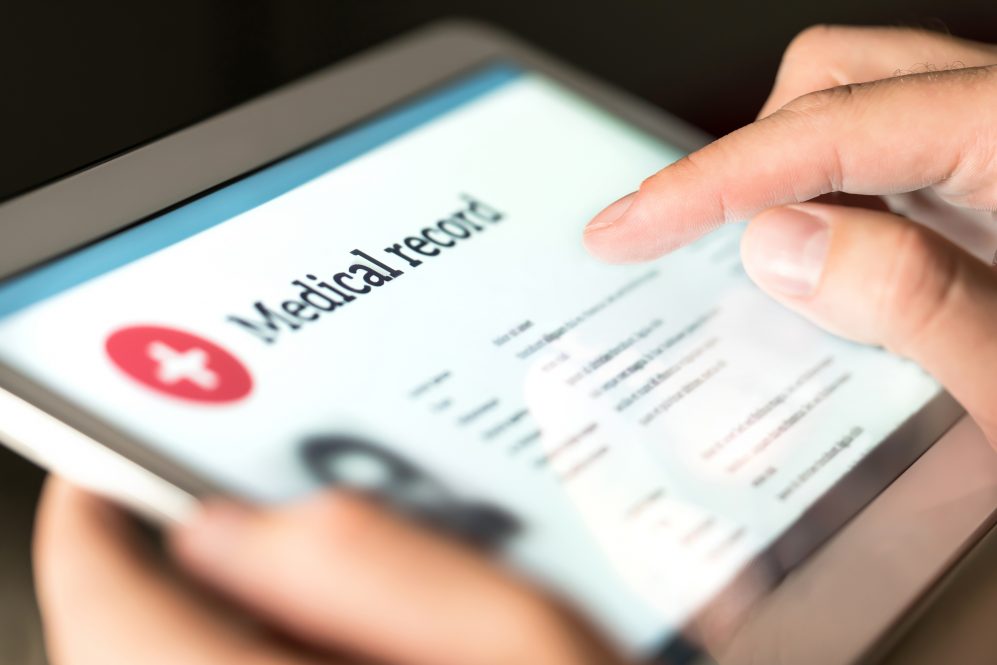When Keith Bellizzi got word of his latest cancer diagnosis, he didn’t yet have an appointment with his oncologist in the books. There wasn’t a date and time to look forward to discussing what it all meant and what the next steps were.
He hadn’t gotten a call from a nurse in the office to break the news that a nuclear imaging test showed his thyroid cancer had returned and radiation would be in his future. No human delivered the message.
Bellizzi says he learned in a nontraditional way that some might describe as simply callous: An online patient health portal offered him test results and a complicated summary of the findings, ending with the words, “may represent recurrent disease.”

“It was unconventional and anxiety producing,” he says. “We’d been monitoring my blood markers for some time and one in particular has been steadily rising, so I went in for a follow-up imaging test. I somewhat suspected bad news. What I did not anticipate was the bad news would be delivered over a patient portal as opposed to an in-person consultation with my physician.”
It also was a Friday afternoon – and a long holiday weekend at that.
“Here’s someone who’s educated, health-literate, engaged in cancer care research for over 20 years, and still struggling not only to understand the information but to process it. I thought about how others with low health literacy might react to that type of information being communicated via a patient portal,” he says.
As he laid awake that Friday night, Bellizzi, a Human Development and Family Sciences professor, put pen to paper and wrote “You’ve Got Mail – Receiving Bad News Through a Patient Portal” for the Viewpoint section of JAMA Oncology. It was published April 20.
The HIPAA patient privacy law that went into effect in 1996, among other things, allowed patients access to their medical records by submitting a written request, Bellizzi explains. In 2016, the 21st Century Cures Act strengthened access, eliminating the need for a written request and requiring release without delay and without charge.
Consequently, patients now can log into a portal to get the results of routine screenings, such as cholesterol and glucose tests. But it also means that life-changing, potentially terminal diagnoses show up without the benefit of a person-to-person conversation or explanation.
“Health information technology, including the use of patient portals, has numerous benefits and will clearly be a part of the future of cancer care delivery, particularly in light of the pending wave of retiring oncologists, complexity of cancer care, and aging of the U.S. population,” he says. But “we need to be mindful of the diverse patient population being served as this technology evolves.”
Medical test results are written by medical professionals for their peers, not patients, Bellizzi argues. Add to that a low health literacy rate in the country and human nature – the almost immediate, irresistible urge to research medical information online.
“Without understanding the source and accuracy of online information, turning to Dr. Google could cause even more anxiety,” he says. “And we’ve all done this. We research a health condition online and often think the worst possible outcome.”
That alone can cause an unnerved patient to contact their doctor, who then must return the phone call after reviewing the patient’s file, probably taking them from another patient or at least adding hours to their workday, thereby increasing their workload, Bellizzi says.
In the process of streamlining care, electronic health records tethered patient portals were adopted too quickly and with inadequate patient input to make them as effective as they could be, he says. They didn’t consider health literacy rates, patient preferences, or the fact that a quarter of all patients don’t have internet access.
Answering the question of how to fix the system isn’t easy.
“I don’t think there’s a one-size-fits-all solution. Perhaps it’s OK for some patients to log into their patient portal and look at their routine cholesterol results, for example. At the same time, there may be circumstances in which we really need to be mindful of how and when diagnostic and prognostic medical data is communicated via patient portal,” he says.
Without understanding the source and accuracy of online information, turning to Dr. Google could cause even more anxiety. And we’ve all done this. — Prof. Keith Bellizzi
One thought might be to test whether artificial intelligence can translate complicated medical terminology for the layman and include the translation in the portal – albeit a method that comes with its own list of cons. Or, medical offices could create the job of health navigator, a person whose sole responsibility is to communicate with patients before they have a chance to see results on their own.
“As soon as information is updated in your chart, you automatically get an email,” Bellizzi says of the way the system now works. “Is there a way to delay that notification? Is there a way for doctors, in certain situations, to hold that information, giving them a chance to communicate with the patient first, especially within the context of cancer or any life-threatening illness?”
Bellizzi says the software allows for that, but it’s a feature that’s not generally used. Doctors are concerned about violating the 21st Century Cures Act, which could result in fines. But there is an exception in the law that allows the temporary withholding of medical information that could potentially cause the patient harm.
“I would argue that a diagnosis of a life-threatening illness could potentially cause harm,” he says. “So, why can’t providers do this or, if we’re concerned about violating the mandate, empower the patient to either opt out of receipt of information that could potentially cause harm until an in-person conversation can happen.
“I knew at some point I was going to receive my test results, and if I had the options of ‘yes, I want these results’ or ‘no, I would prefer to wait until I had an in-person conversation with my physician,’ I could have made the decision that was right for me,” Bellizzi continues.
Besides, his own research indicates that two-thirds of patients prefer to receive bad news directly from their doctor, he notes.
“In defense of providers, they’re not exactly sure how to optimize the patient portal experience and are required to enter test results and notes into patient medical records. A recent study found that many oncologists are concerned about their patients seeing complex diagnostic and prognostic information before they get a chance to talk with their patient,” Bellizzi says. “In a world that is becoming increasingly digitized, I do think there’s great potential for patient health portals, but I also worry about replacing human interactions with technology – not in all cases, not in all circumstances, but in certain circumstances.”



